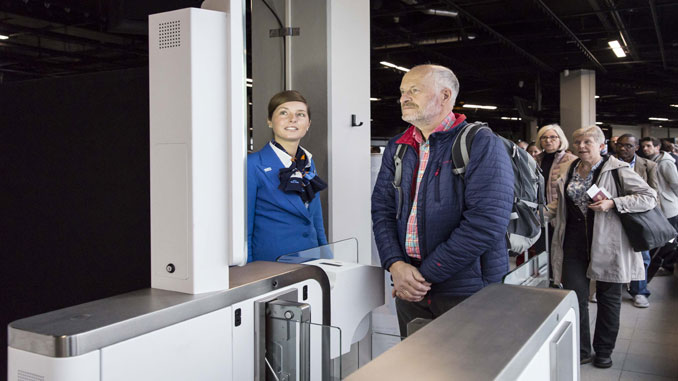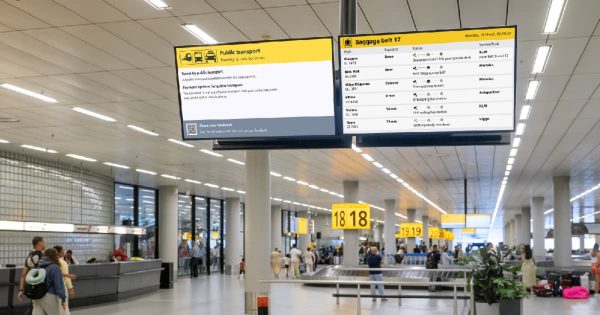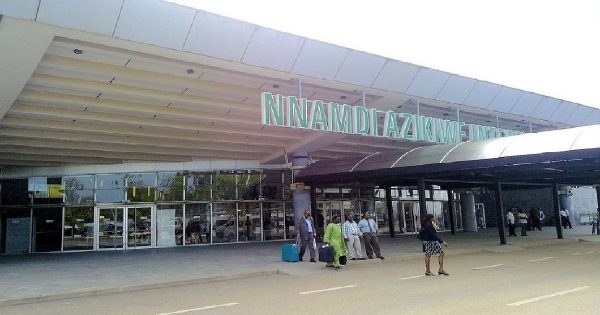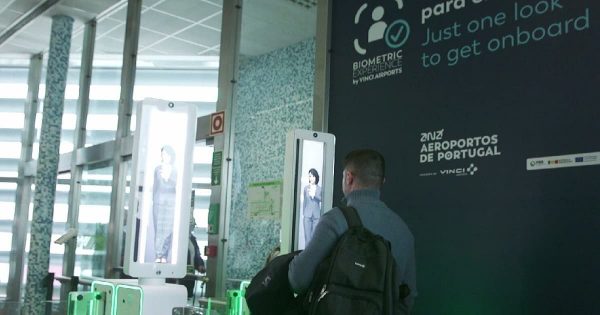Schiphol Airport and KLM have started a test of biometric boarding.
Using biometric boarding means that facial recognition is used to identify the passengers, they do not use their passport or boarding pass.
Passengers stand at the gate and have their picture taken. That picture is then checked against the data held by KLM – passport, boarding pass and biometric facial details.
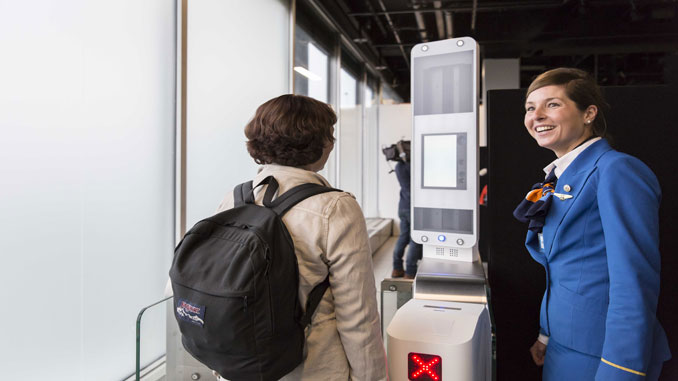
For KLM to have the data, passengers have to register their details before using the biometric boarding gate. Registration involves scanning the passport, the boarding pass, and the passenger’s face.
The data will be used only for the test. Following boarding, all personal data will be erased. All data storage in the registration kiosk is erased after ten hours.
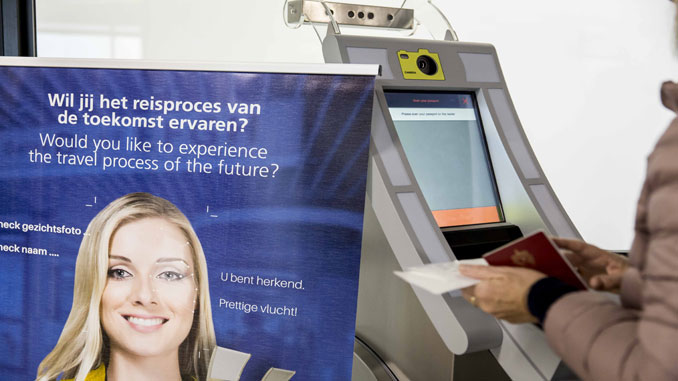
Presumably this registration process is only for the trial. In future, it will have to take place at several points automatically – at a self-service check-in kiosk or when scanning the boarding pass before going airside.
Schiphol and KLM say they want to study the technology of facial recognition – the system’s speed, reliability, and user-friendliness. They will also examine the boarding process and the passenger experience. The ultimate aim is to make the boarding process as quick and easy as possible for passengers. The test period will last a minimum of three months. It will take place at a specially selected gate at the airport.
Facial recognition has been in use at Schiphol for some years. The airport has ABC e-Gates for departing passengers.
Shoe scanner
According to Dutch newspaper, the Telegraaf, the airport will also start to use shoe scanners, eliminating the need for passengers to remove their shoes during security checks. The scanners come from Dutch company Stage Gate 11 (SG11).
N.B. Image credit: KLM
